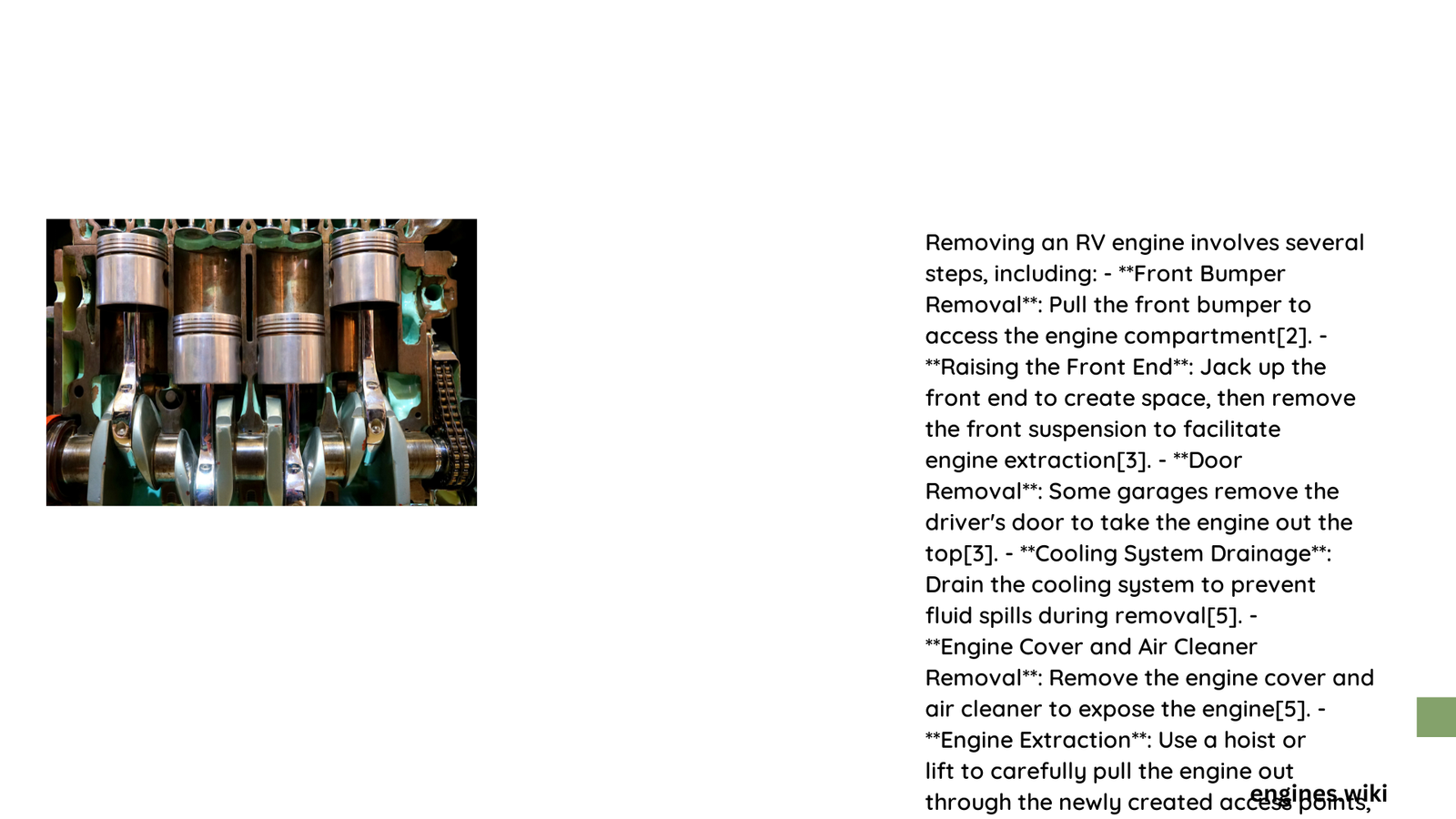Removing an RV engine is a complex mechanical procedure that requires precision, specialized tools, and comprehensive knowledge. This intricate process involves carefully disconnecting multiple systems, supporting heavy components, and managing potential challenges like tight spaces and rusted connections. Successful engine removal demands methodical preparation, proper safety protocols, and a systematic approach to prevent damage to your recreational vehicle’s critical systems.
Why Would You Need to Remove an RV Engine?
RV engine removal becomes necessary for several critical reasons:
- Major repair requirements
- Complete engine replacement
- Transmission or drivetrain overhaul
- Diagnosing extensive mechanical issues
What Tools Do You Need for RV Engine Removal?

| Tool Category | Specific Items | Estimated Cost Range |
|---|---|---|
| Lifting Equipment | Engine crane/hoist | $200 – $1,000 |
| Hand Tools | Socket set, ring spanners | $50 – $200 |
| Safety Equipment | Protective gloves, safety glasses | $30 – $100 |
| Miscellaneous | Penetrating spray, lifting slings | $20 – $70 |
How to Prepare for RV Engine Removal?
Preliminary Safety Checks
- Ensure Stable Environment
- Park RV on level ground
- Use stabilizing supports if necessary
-
Clear workspace around the vehicle
-
Electrical and Fluid Management
- Disconnect battery terminals
- Drain all vehicle fluids
- Prepare fluid collection containers
What Are the Step-by-Step Engine Removal Procedures?
Disconnection Phase
- Remove engine compartment cover/bonnet
- Disconnect electrical connections
- Separate coolant and hydraulic lines
- Detach exhaust system components
- Unbolt transmission connection points
Lifting and Extraction
- Position engine crane strategically
- Attach lifting chains/slings securely
- Slowly raise and extract engine
- Maintain balanced, controlled movement
- Have a second person guide extraction
What Challenges Might You Encounter?
Common Complications:
– Seized mounting bolts
– Tight clearance spaces
– Unexpected electrical connection complexity
– Potential fluid system damage
Critical Safety Recommendations
- Always wear personal protective equipment
- Use proper lifting techniques
- Work with a partner
- Follow manufacturer’s specific guidelines
- Take photographs during disassembly for reference
Pro Tips for Successful RV Engine Removal
- Label all disconnected components
- Use penetrating lubricant on stubborn bolts
- Maintain clean, organized workspace
- Document each removal step
- Protect surrounding vehicle components
Estimated Time and Complexity
| Skill Level | Average Time | Complexity |
|---|---|---|
| Professional | 4-6 hours | Low |
| Experienced DIY | 8-12 hours | Moderate |
| Beginner | 12-16 hours | High |
Final Considerations
RV engine removal is not a casual undertaking. It requires technical expertise, proper tools, and meticulous attention to detail. When in doubt, consult professional mechanics who specialize in recreational vehicle maintenance.
